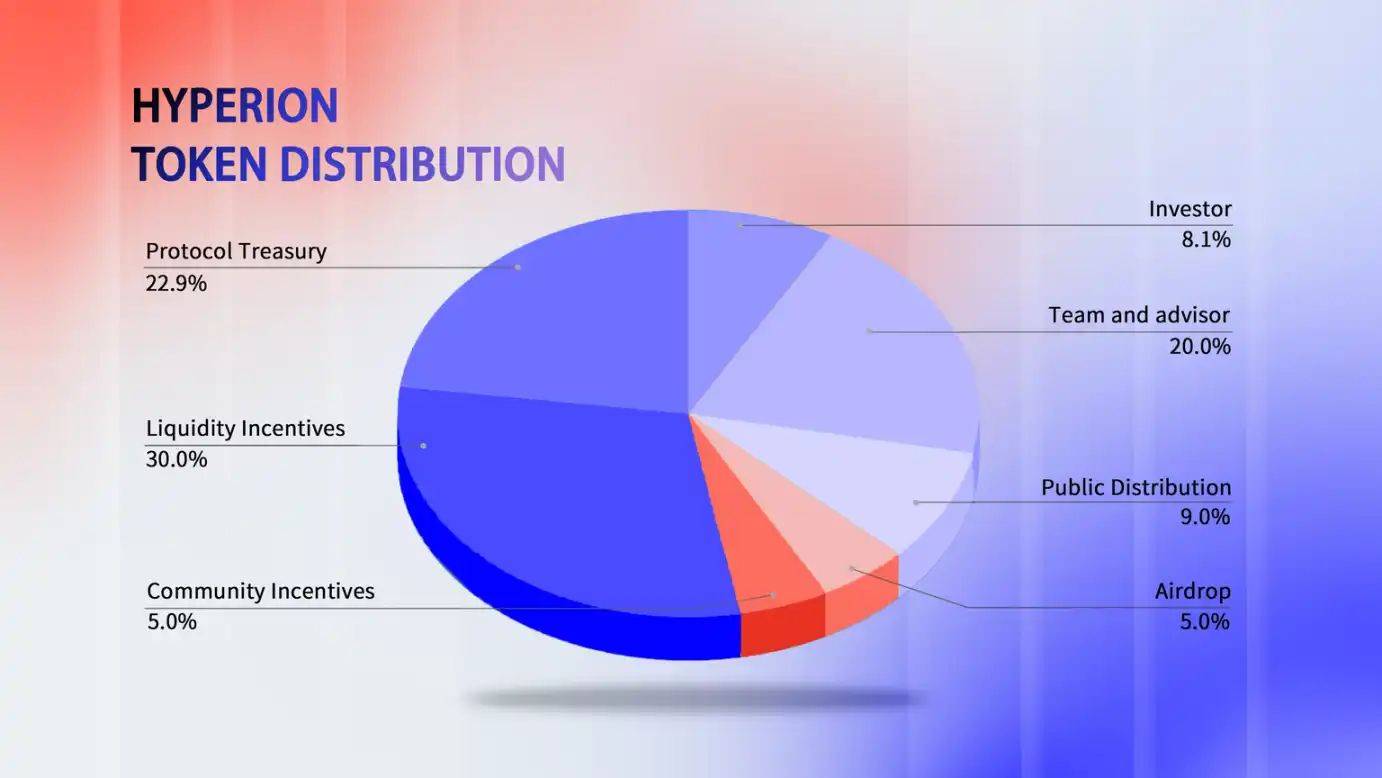Binance's New Feature Bonding Curve TGE Launches, Hyperion Token RION Purchase Guide
Original author: Alex Liu, Foresight News
On July 16 at 16:00, Binance Wallet will host its first Bonding-Curve version TGE, launching the native token RION of the Aptos ecosystem DEX project Hyperion. This event requires eligible users to use Binance Alpha points to participate in the subscription, providing liquidity for the dynamic pricing and trading of RION through the "Bonding-Curve" algorithm.

Taking this opportunity, we comprehensively review Hyperion's project positioning, technical features, financing history, data metrics, token economics, airdrop plan, etc., while also introducing other hot projects and overall activity in the Aptos ecosystem.
Protocol features: Hybrid order book AMM aggregation
Hyperion is a natively deployed hybrid decentralized exchange (DEX) on the Aptos chain, integrating order book matching and advanced automated market making mechanisms. The core design is based on a concentrated liquidity model (similar to Uniswap V3), allowing liquidity providers to allocate funds within specified price ranges, improving capital efficiency.
Hyperion also features a Directional Liquidity Market Maker (DLMM) mechanism, dynamically adjusting the fund distribution within the x y=k curve to achieve zero-slippage trading for high-volatility assets. This way, Hyperion can efficiently serve stablecoin pairs while meeting the trading needs of long-tail assets, making it the first DEX on Aptos to satisfy this scenario.
In June 2025, Hyperion launched an aggregation routing function, shifting its positioning from a single DEX to a full-chain liquidity hub. This function intelligently splits trading paths, aggregating liquidity from all DEXs on Aptos to provide users with the best prices and lowest slippage.

Hyperion's official documentation states that its "fully on-chain hybrid order book -AMM DEX" natively utilizes Aptos's parallel execution engine, catering to both professional traders and retail investors. Additionally, Hyperion is developing limit order functionality and features a yield vault (Vault) and Drips incentives, forming a complete trading infrastructure layer.
Binance's new玩法Bonding Curve TGE上线,Hyperion代币RION抢购攻略" src="https://piccdn.0daily.com/202507/16082235/vtwg5ibb84l5nz6t!webp" data-img-size-val="1080,612"/>
Binance's new玩法Bonding Curve TGE上线,Hyperion代币RION抢购攻略" src="https://piccdn.0daily.com/202507/16082235/7j9f435qmu3wbusk!webp" data-img-size-val="1917,891"/>
It has also partnered with mainstream wallets and platforms to carry out many user incentive activities. For example, the USDC DeFi activity in collaboration with OKX Wallet, and the trading mining and airdrop activities in collaboration with Bitget Wallet and Gate Wallet, introducing users and liquidity to the protocol.
Hyperion has introduced the Drips points system, allowing traders, LPs, and community contributors to accumulate points through on-chain interactions, linked to airdrops and governance. Various measures have jointly promoted user growth: as of now, the total number of on-chain interaction participants on Hyperion has reached nearly 940,000.
Token economics: Dual-token model and distribution
Hyperion adopts a dual-token model: the tradable native token RION (total supply of 100 million) and the governance token xRION generated through staking. RION is the functional token of the Hyperion platform, used to pay fees, settle trades, and distribute rewards. xRION is a non-transferable governance credential; users can lock RION (up to 52 weeks) to obtain xRION, used for platform governance and new project launch pool quotas. The weight of xRION decreases linearly over time, designed to encourage long-term holding and continuous participation.
Hyperion has announced the genesis airdrop arrangement: a total of 5% of RION will be used to reward early participants in the protocol. Of this, 3% will be released at token generation, and the remaining 2% will be linearly unlocked one month after TGE. The uses of RION also include platform operations, ecological development rewards, etc. (the official documentation notes that RION will be distributed as platform participation incentives, only based on actual on-chain activities, and inactive users will not receive additional tokens). RION will be issued through Binance Wallet's Bonding Curve mechanism, with its price determined by supply and demand, and will become a regular tradable asset after the event.

Participate in Binance Wallet's Bonding Curve version TGE
This RION TGE is exclusively issued by Binance Wallet's Bonding-Curve version TGE, marking the first such event for Binance Alpha. The subscription time is set from 16:00 to 18:00 on July 16, 2025, requiring Binance Alpha points to participate.
The event rules are: each user can invest up to 3 BNB to participate in the subscription, and the smart contract will dynamically calculate the current price based on the total amount of RION sold. Once a user confirms their investment, the BNB is locked, and an equivalent amount of RION is allocated to their Alpha account; during this stage, RION cannot be withdrawn off-chain and can only be traded with other users on the event page. Once an order is submitted, it cannot be revoked, and it will be executed as long as there are matching orders from other users. After the event ends, all unmatched BNB will be automatically refunded to the wallet, and the RION held by users will be unlocked, becoming freely tradable assets.
In simple terms, it's "buy early, cheap; buy late, expensive", and before the event ends, it's only "internal trading", after which it becomes freely tradable.
Original link
